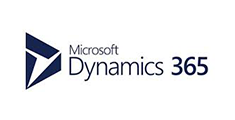
Dependent Assemblies Update!
WebSiteAdmin, November 7, 20221661 Views
Hey Readers, breaking news!! and good ones this time!!
Microsoft has released supported way for dependent assemblies in plug-ins. This release was released for public review for admins, makers, marketers, analysts automatically on 31 July 2022. General availability is yet to be announced.
Currently developers use ILMerge Utility to combine set of assemblies in plug-in, which is an unsupported way. The output can then be registered with the web service to extend the business logic.
With the release of the dependent assemblies, Microsoft Dataverse provides a supported way to include dependent assemblies when registering a plugin with the Dataverse.
With dependent assemblies, instead of registering a .NET assembly, you will have to upload a NuGet Package containing the plugin assembly and the dependent assemblies. Which is stored in new table named PluginPackage. NuGet Package contents are stored in a file storage instead of SQL.
In the NuGet package, assemblies containing classes implementing IPlugin interface will be registered in PluginAssembly table, associated with PluginPackage.
Dataverse copies NuGet contents from PluginPackage, extracting to the sandbox at runtime.
You will still be able to register plug-in assemblies individually.
Signing is required when registering individual plugin assembly because it provides a unique name. With plug-in assemblies within plug-in package, the assemblies are loaded on the sandbox server using a specific mechanism, thus does not require signing.
You can add a dependent assembly using NuGet by adding a NuGet package to your Visual Studio Project as you normally do. Once you build the project, the assembly will be found in the NuGet package.
You can add a dependent assembly without using NuGet as well. An assembly that is not distributed as a NuGet Package, you can add it to the Project as you normally do. In solution explorer, right-click ‘Dependencies’ then choose ‘Add Assembly Reference’. Select the required Assembly.
Hope this helps!
ATM Inspection PowerApp to ease ATM inspection and report generation process.
https://www.inkeysolutions.com/microsoft-power-platform/power-app/atm-inspection
Insert data into Many-to-Many relationship in Dynamics CRM very easily & quickly, using the Drag and drop listbox.
http://www.inkeysolutions.com/what-we-do/dynamicscrmaddons/drag-and-drop-listbox
Comply your Lead, Contact, and User entities of D365 CRM with GDPR compliance using the GDPR add-on.
https://www.inkeysolutions.com/microsoft-dynamics-365/dynamicscrmaddons/gdpr
Create a personal / system view in Dynamics CRM with all the fields on the form/s which you select for a particular entity using the View Creator.
http://www.inkeysolutions.com/what-we-do/dynamicscrmaddons/view-creator












